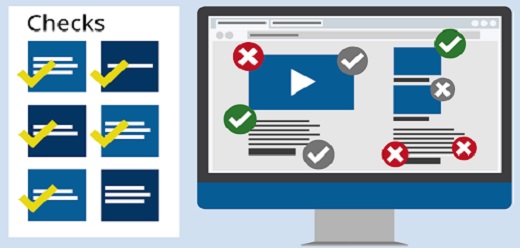
At an EU level there is a lot of progress being made when it comes to accessibility online. An EU project LEAD-ME (https://lead-me-cost.eu/action/programme/) comprises a group of researchers, engineers, scholars as well as businesses and policymakers that have come together to share their expertise and are working to observe and influence media accessibility, by contributing to existing standards and proposing new ones in Europe. One of the research areas that this project is contributing to is looking at how we can improve the accessibility of online content.
The world’s first publicly available website was published in August 1991 and by the end of 1993 there was a grand total of 623 websites available online. Since the late 1990s the majority of Irish schools (both primary and post-primary) have created a website so that they can communicate with the wider school community and beyond. When those first school websites were created many designers had not considered accessibility issues; having a website was a critical first step in engaging in the online world. The majority of schools have seen many improvements to their online offering in recent years but there are many websites that feature design elements that make it difficult for some users to access content. Since, at least, 2011 studies have reported that parents prefer electronic communication to the backpack folder (Laho, 2019) and with the proliferation of smartphones it has never been easier for schools to exploit online communication. Given this preference it is important that the online experience is at the very least meeting basic accessibility requirements.
There is relatively little in terms of published research that focuses on the content of school websites and how that content is presented to the world. In a 2018 article Gilleece and Eivers carried out a study which looked at the websites for 100 Irish primary schools. They found that there was a general underuse of school websites at primary school level in terms of being used as a source of information for members of the school community. Communication between schools and the wider community is generally one-way. The school may use a website (including online newsletters) to share information about school-related events which may be of interest to the wider community. Parents and guardians may also seek “cold” information about school policies and enrolment procedures (Ball and Vincent, 1998; Gilleece and Eivers, 2018).
However, when a child is enrolled in a school the nature of the communication changes. The school website may be used much less frequently to obtain information about school events or information pertaining to individual students. In recent years, the majority of Irish primary schools are using an app for bidirectional school-home communication. These management apps have been developed with responsive web design at their core and accessibility is clearly a priority. Unlike, the majority of school websites these apps are not designed for an individual school. Many schools will use the same app and it will have a uniform layout and design. However, the school website will usually continue receive a lot of visitors as it continues to be used as a repository for content such as: school policies, photos and newsletters.
In April the Minister for Education was asked a Parliamentary Question (Reference 20447/22 https://www.oireachtas.ie/en/debates/question/2022-04-26/912/?highlight%5B0%5D=20447&highlight%5B1%5D=22) in relation to school websites and their obligation to provide a web accessibility statement under the web accessibility directive. The Minister explicitly stated in her response that school websites are defined as public sector websites, and as such, they must have a web accessibility statement published on their websites. In recognising the legal requirement that individual schools have in terms of providing an Accessibility Statement on their website the Department of Education can ensure that the Accessibility Statement be prepared and the online experience is made much better for everyone. For anyone looking for easy to understand information relating to the Web Accessibility Directive and how to comply with the legal requirements the website for the National Disability Authority has information relating to the Web Accessibility Directive and also has templates available to download. The Minister for Education has stated that her Department will work with National Disability Authority as required to ensure appropriate guidance is in place for schools to assist them in the implementation of and compliance with this regulation. It is important for school leaders to think about their particular needs within this context especially with regard to meeting the requirements within the EU directive and outlining their professional educational CPD needs in order to successfully create a useful a user-friendly experience for all stakeholders.
References
Gilleece, L. & Eivers, E. (2018) Primary school websites in Ireland: how are they used to inform and involve parents?, Irish Educational Studies, 37:4, 411-430, DOI: 10.1080/03323315.2018.1498366
Laho, N. S. (2019). Enhancing School-Home Communication through Learning Management System Adoption: Parent and Teacher Perceptions and Practices. School Community Journal, 29(1), 117-142.
Marcus-Quinn, A. & Hourigan, H. (2022) The EU Web Accessibility Directive- and what it means for school websites. Leader Magazine (NAPD), 80-81.


